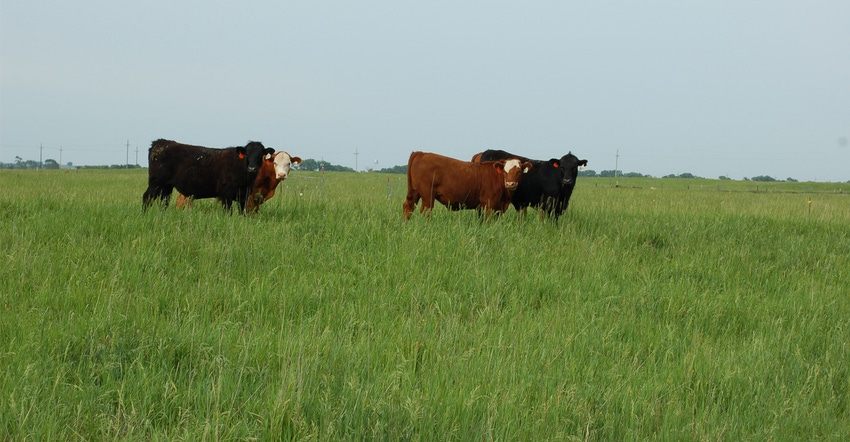January 23, 2019

By Daren Redfearn
and Mary Drewnoski
Forage production systems include spring and fall grazing of perennial cool-season grasses, summer grazing of warm-season perennial grasses and winter grazing of corn residues, with annual forages filling needs during various grazing periods.
Annual forages are used to increase the forage production potential per acre, reduce the need to rent or buy pasture and to modify or expand livestock production systems.
Planting date is the most important management factor that affects forage production. Late-summer planting reduces fall forage growth potential, and these effects carry over into the spring with reduced spring forage production, especially for winter small grains. From a plant perspective, it is common to see variable growth or forage production because of planting date and moisture availability.
Perennial forages
Nearly all successful integrated crop-livestock systems rely on using perennial grass pastures. Smooth bromegrass, intermediate wheatgrass and crested wheatgrass are used for spring and fall grazing.
In a two-year, on-farm grazing trial in the Nebraska Sandhills, mean average daily gain ranged from 1.8 to 2.1 pounds per head per day and produced 290 to 409 pounds of beef per acre. In eastern Nebraska, “Lincoln” smooth bromegrass is the dominant perennial cool-season grass.
A three-year cattle grazing study showed 14% greater ADG and 13% greater beef gain per acre for cattle grazing “Newell” smooth bromegrass compared with cattle grazing “Lincoln” smooth bromegrass. Likewise, steers grazing intermediate wheatgrass had ADG up to 2.7 pounds per head per day and produced up to 656 pounds of beef per acre with 42 grazing days in eastern Nebraska.
Improved native, perennial, warm-season grasses, such as big bluestem, have been developed to supplant smooth bromegrass for summer grazing. A three-year big bluestem grazing study was conducted in eastern Nebraska from 2000 to 2002 with 2.9 pounds per head per day ADG for the three years. Beef production averaged 999 pounds of beef per acre on pastures grazed for 62, 43 and 38 days in 2000, 2001 and 2002, respectively.
Annual forages
Many annual forage options are available, but the planting window and the window of forage use narrows these options. Grazing use and desired regrowth versus use for hay, silage or stockpiled grazing also can affect species selection.
Annual forages can be divided into three types:
1. cool-season, winter-hardy (winter types)
2. cool-season, winter-sensitive (spring types)
3. warm-season, summer annuals
The type of annual forage selected should be based on planting date and forage need. Cool-season, winter-hardy forages can be planted in fall and used in the early spring. Cool-season, winter-sensitive forages can be planted in spring and used in late spring and early summer, or can be planted in late summer for fall or winter forage.
Warm-season, summer annual forages are planted in late spring or early summer for late summer, fall or winter forage. Within a type, there are differences among species, and even within species (varieties), there are differences in growth and productivity.
Grasses produce the greatest biomass and usually are the most cost-effective annual forage source. However, strategic use of brassicas in a fall-planted mix with cool-season, spring small grains, such as oats, can be cost-effective.
Implications
Annual forages can be cost-effective and fit into some cropping systems. One of the most important drivers of productivity and cost-effectiveness of annual forages is planting date. Planting dates outside the recommended planting window are unlikely to result in desired growth.
For instance, planting cool-season, winter-sensitive annuals such as oats in mid-September is likely to result in reduced growth with little return on investment. Using annual forages as a double crop is not foolproof and can have major challenges. Having realistic expectations of planting date is one of the keys to proper species selection.
Redfearn is a Nebraska Extension forage crop residue specialist. Drewnoski is a Nebraska Extension beef systems specialist. This report comes from UNL CropWatch, which is solely responsible for the information provided and is wholly owned by the source. Informa Business Media and all its subsidiaries are not responsible for any of the content contained in this information asset.
You May Also Like




